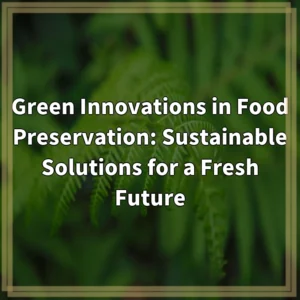What is Vertical Farming?
Vertical farming is a revolutionary approach to agriculture that involves growing crops in vertically stacked layers, utilizing indoor spaces such as warehouses, skyscrapers, or shipping containers. This innovative farming method makes use of technologies like hydroponics, aeroponics, and artificial lighting to create controlled environments where plants can thrive.
Real-World Problems Associated with Vertical Farming
1. Limited Space
One of the primary reasons for the development of vertical farming is to address the issue of limited agricultural land. As urbanization continues to expand, the availability of traditional farmland decreases. Vertical farming offers a solution, allowing crops to be grown in urban areas without the need for vast fields.
2. Resource Consumption
While vertical farming can be more efficient in certain aspects, it is not without its challenges. The use of artificial lighting to supplement natural sunlight can result in high energy consumption. Additionally, hydroponic and aeroponic systems require a significant amount of water and nutrients, which need to be carefully managed to minimize waste.
3. Cost and Affordability
Implementing and operating a vertical farm can be expensive, especially when considering the necessary equipment and technology required for optimal plant growth. This cost factor presents a challenge for small-scale farmers or communities with limited financial resources, making it less accessible for widespread adoption.
4. Scalability
While vertical farming can greatly increase the productivity of crops in a given area, scaling up the operations to meet the demands of a larger population can be challenging. Expanding vertical farming systems to a commercial level requires significant investment, careful planning, and efficient management of resources to ensure profitability.
5. Technological Reliability
As vertical farming relies heavily on technology and automation, there is a risk of system failures or malfunctions. Technical glitches or power outages can disrupt the optimal growth conditions, potentially leading to crop losses. Ensuring reliable and robust technological systems becomes crucial for the success of vertical farming.
6. Market Demand and Consumer Acceptance
Introducing produce grown through vertical farming into the market may face challenges related to consumer acceptance. Some consumers may have concerns about the taste, texture, or nutritional value of crops grown indoors without natural sunlight. Educating the public about the benefits and safety of vertically farmed produce is essential to gain consumer trust.
Conclusion
Despite the challenges associated with vertical farming, it offers a promising solution to address the increasing demand for fresh and local produce, as well as minimize the environmental impacts of traditional farming. Overcoming the real-world problems and continuously improving the efficiency and sustainability of vertical farming will play a crucial role in securing a food-secure future.

Solutions for Real-World Problems in Vertical Farming
1. Efficient Space Utilization
Vertical farming optimizes the use of limited space by growing crops vertically. This approach allows for the cultivation of a larger quantity of plants in a smaller footprint, making it an effective solution for urban environments with limited land availability.
2. Sustainable Resource Management
To mitigate resource consumption, vertical farming can integrate renewable energy sources, such as solar panels, to power the artificial lighting systems. Additionally, implementing advanced water recycling techniques and efficient nutrient management practices can help minimize water and nutrient waste.
3. Cost Reduction and Accessibility
Developing cost-effective technologies and exploring alternative funding options, such as community-supported agriculture programs or government initiatives, can make vertical farming more accessible to small-scale farmers and economically disadvantaged communities.
4. Scaling Up Operations
Collaborating with experts in the agricultural and technological fields can assist in designing scalable vertical farming systems. Sharing knowledge, best practices, and innovative solutions can help overcome the challenges associated with expanding vertical farming to commercial levels.
5. Technological Advancements
Continuous research and development of robust technological systems, along with regular maintenance and redundant backup systems, can enhance the reliability and performance of vertical farming operations. Emphasizing technological advancements and staying updated on industry trends is crucial for addressing any potential system failures.
6. Consumer Education and Awareness
Educating consumers about the benefits, safety, and quality of crops grown through vertical farming can help overcome any initial skepticism. Engaging with the community through various platforms, such as public demos or educational workshops, can foster acceptance and trust in vertically farmed produce.
Conclusion
By implementing these solutions, vertical farming can become a sustainable and viable method of food production, offering numerous benefits including reduced land use, resource efficiency, and increased access to fresh produce. With continuous innovation and collaboration, vertical farming has the potential to revolutionize the way we grow and consume food.













